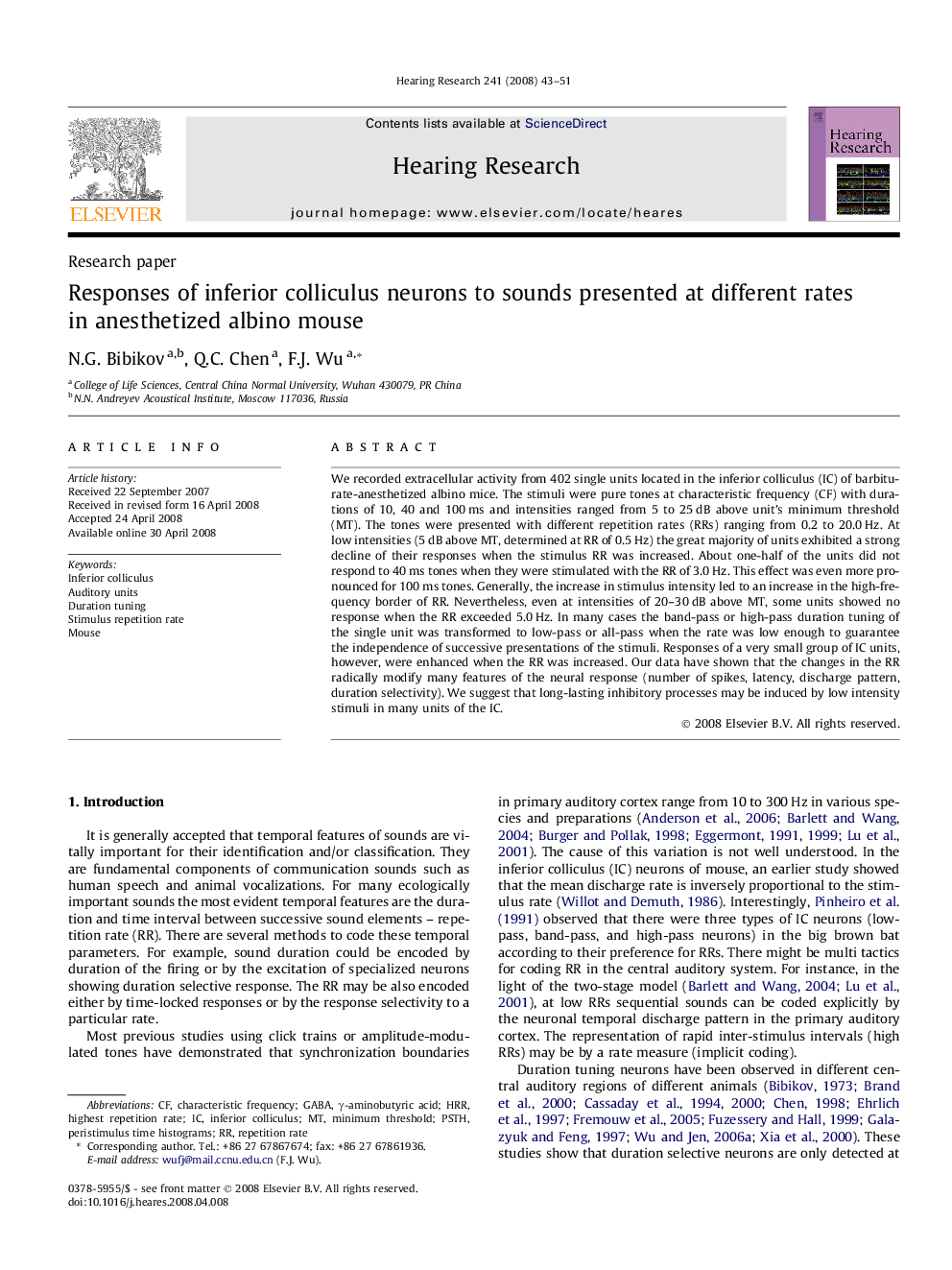| Article ID | Journal | Published Year | Pages | File Type |
|---|---|---|---|---|
| 4356075 | Hearing Research | 2008 | 9 Pages |
We recorded extracellular activity from 402 single units located in the inferior colliculus (IC) of barbiturate-anesthetized albino mice. The stimuli were pure tones at characteristic frequency (CF) with durations of 10, 40 and 100 ms and intensities ranged from 5 to 25 dB above unit’s minimum threshold (MT). The tones were presented with different repetition rates (RRs) ranging from 0.2 to 20.0 Hz. At low intensities (5 dB above MT, determined at RR of 0.5 Hz) the great majority of units exhibited a strong decline of their responses when the stimulus RR was increased. About one-half of the units did not respond to 40 ms tones when they were stimulated with the RR of 3.0 Hz. This effect was even more pronounced for 100 ms tones. Generally, the increase in stimulus intensity led to an increase in the high-frequency border of RR. Nevertheless, even at intensities of 20–30 dB above MT, some units showed no response when the RR exceeded 5.0 Hz. In many cases the band-pass or high-pass duration tuning of the single unit was transformed to low-pass or all-pass when the rate was low enough to guarantee the independence of successive presentations of the stimuli. Responses of a very small group of IC units, however, were enhanced when the RR was increased. Our data have shown that the changes in the RR radically modify many features of the neural response (number of spikes, latency, discharge pattern, duration selectivity). We suggest that long-lasting inhibitory processes may be induced by low intensity stimuli in many units of the IC.
